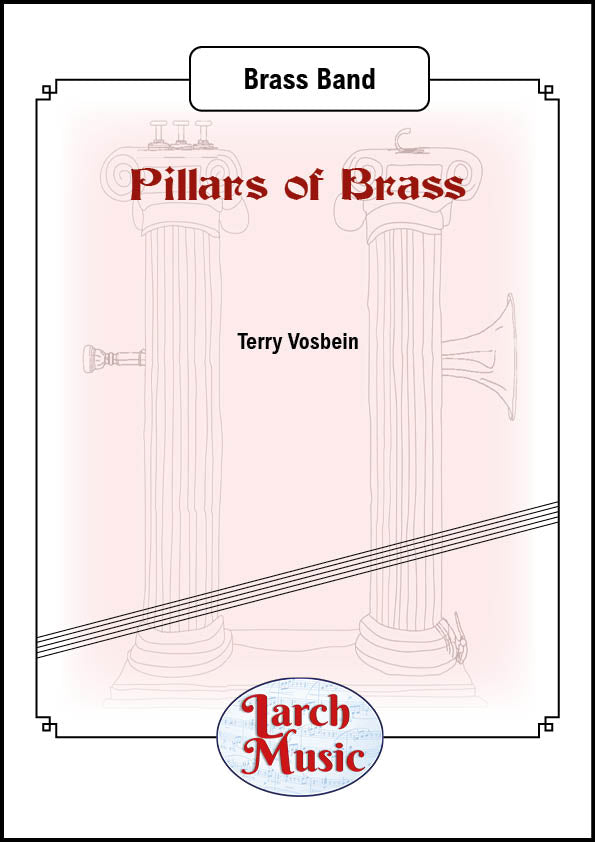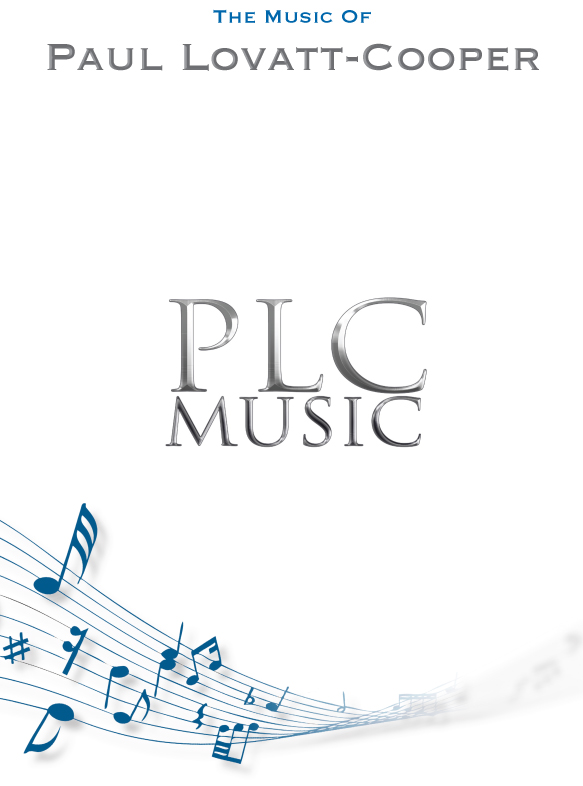Results
-
 £29.95
£29.95Nightfall in Harlem - Jonathan Bates
DURATION: 5'30". DIFFICULTY: 1st+. 'Nightfall in Harlem' is a Flugel Horn solo in two short sections, each depicting a scene in the New York ditrict of Harlem, situated at the north end of Central Park. There is a heavy influence of jazz and blues throughout this solo with the opening 'Central park by night'; a moody and sleazy depiction of the bright lights of the New York skyline which engulf Central Park followed by the virtuosic 'Buskers', paying homage to the many jazz musicians who line the pavings of the park throughout the year.
In Stock: Estimated dispatch 1-3 working days
-
 £25.00
£25.00Os Justi (Anton Bruckner arr. by John Davis) - Brass Band Sheet Music Full Score & Parts - LM406
COMPOSER: Anton BrucknerARRANGER: John DavisA great addition to the brass band repertoire from John DavisOs justi('The mouth of the righteous'),WAB30, is a sacredmotetcomposed byAnton Brucknerin 1879.Os Justiis aGregorian chantused asgradualof theCommune Doctorum,and asintroitIand gradual IIof theCommune Confessoris non Pontificis.History
In Stock: Estimated dispatch 3-5 working days
-
 £90.00
£90.00Pillars of Brass - Brass Band - LM946
COMPOSER: Terry VosbeinFanfares, pretty melodies, powerful climaxes, gorgeous textures, and showy solos.This three movement composition is an ideal showcase for an advanced band.The movements are each 4-5 minutes long and can be performed independently.I. A Fanfare and a DittyAfter both the fanfare and the ditty are presented, a type of development follows.It soon drifts into more ambiguous and profound sounds before bringing the fanfare back.II. A BluesNot a blues in traditional form, but a blues in feeling.Bluesy solos and a yearning quality, that eventually builds into a screamed prayer.III. A Wild and Happy RideImagine the drives of Jack Kerouac, or John Steinbeckor William Least Heat-Moon.An adventure on wheels across hundreds of miles, maybe thousands.Playing time approx. 13' 30"
In Stock: Estimated dispatch 3-5 working days
-
 £10.00
£10.00Endurance
DescriptionMen wanted for hazardous journey. Small wages, bitter cold, long months of complete darkness, constant danger, safe return doubtful. Honour and recognition in case of success. - Ernest Shackleton, 4 Burlington StreetEndurance takes its title from the ship used by Sir Ernest Shackleton's Imperial Trans-Antarctic Expedition in 1914-15. After many months of fundraising (and reputedly running the above advert in The Times) the Endurance set sail from Plymouth on 6 August 1914. Whilst at sea news of the outbreak of war led Shackleton to put his ship and crew at the disposal of the Admiralty, but their services were not required and they were encouraged to continue. On October 26 1914 they left Grytviken on South Georgia for the Antarctic continent, hoping to find the pack ice shrinking in the Antarctic spring. Two days later, however, they encountered unseasonable ice which slowed their progress considerably. On 15 January 1915, when Endurance was only 200 miles from her intended landfall at Vahsel Bay, the ship became beset by ice which had been compressed against the land to the south by gale force winds. Trapped in the ice of the Weddell Sea, the ship spent the Antarctic winter driven by the weather further from her intended destination until, on 21 November 1915 Endurance broke up forcing the crew to abandon ship and set up camp on the ice at a site they named "Patience Camp".The crew spent several weeks on the ice. As the southern spring started to reduce the extent of the ice shelf they took to their three lifeboats, sailing across the open ocean to reach the desolate and uninhabited Elephant Island. There they used two of the boats to build a makeshift shelter while Shackleton and five others took the largest boat, an open lifeboat named the 'James Caird' and sailed it for 800 terrifyingly dangerous miles across the vast and lonely Southern Atlantic to South Georgia - a journey now widely regarded as one of the greatest and most heroic small-boat journeys ever undertaken. After landing on the wrong side of the island and having to climb over a mountain range in the dark with no map, Shackleton and his companions finally stumbled back into the Grytviken whaling station on 19 May 1916.After resting very briefly to recover his strength, Shackleton then began a relentless campaign to beg or borrow a ship to rescue the rest of his crew from Elephant Island; whaling ships were not strong enough to enter polar ice, but on 30 August 1916, over two years after their departure from Plymouth, Shackleton finally returned to Elephant Island aboard a steam tug borrowed from the Chilean government. Although some were in poor health, every member of the Endurance crew was rescued and returned home alive.Endurance is dedicated to the memory of my mum, who passed away in September 2017.Listen to a computer generated preview and follow the score below:
Estimated dispatch 7-14 working days
-
 £45.95
£45.95Beyond Heaven's Gates - Paul Lovatt-Cooper
Beyond Heaven's Gates was commissioned by Derwent Brass and their Musical Director Keith Leonard to celebrate the bands 25th anniversary. Circa 8:30
Publisher CLOSED indefinitely. Please Contact us for more details
-
 £34.95
£34.95Soaring the Skies - Paul Lovatt-Cooper
A concert opener composed for the staff and students of the Blue Coat School, Oldham. Circa 3:30.
Publisher CLOSED indefinitely. Please Contact us for more details
-
 £39.95
£39.95The Forces Unleashed - Paul Lovatt-Cooper
A concert final commissioned by Lincoln based band Market Rasen with funds provided by Arts Council England. Circa 3:30.
Publisher CLOSED indefinitely. Please Contact us for more details
-
 £64.95
£64.95The Life Within - Paul Lovatt-Cooper
The Life Within was commissioned by Carole Crompton on behalf of Shirebrook Town Council,supported using public funding by the National Lottery through Arts Council England. It is a grans finale work. Circa 11.30
Publisher CLOSED indefinitely. Please Contact us for more details
-
 £34.95
£34.95Through the Flames - Paul Lovatt-Cooper
Through the Flames was composed for Professor Nicholas Childs and the Black Dyke Band it is an exciting concert opener. Circa 3.30
Publisher CLOSED indefinitely. Please Contact us for more details
-
 £34.95
£34.95Valiants Arise - Paul Lovatt-Cooper
Valiants Arise was commissioned by Junction Arts to celebrate their 40th Anniversary 2016 Circa. It is a lively and exciting concert opener c.3.30
Publisher CLOSED indefinitely. Please Contact us for more details


